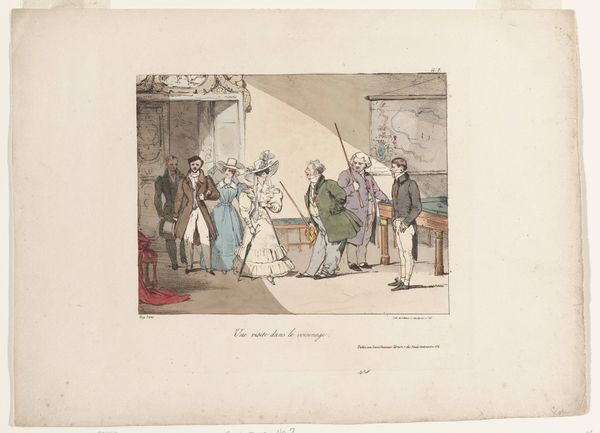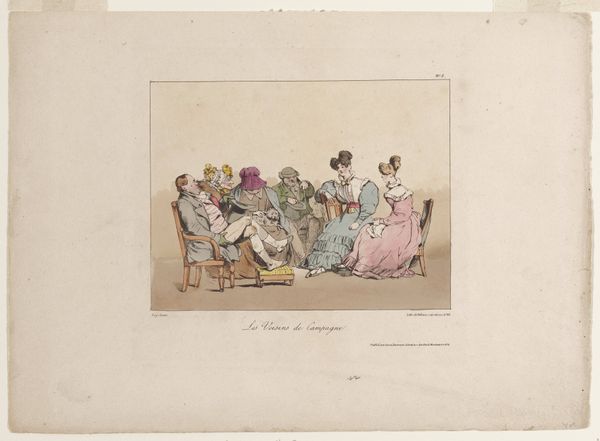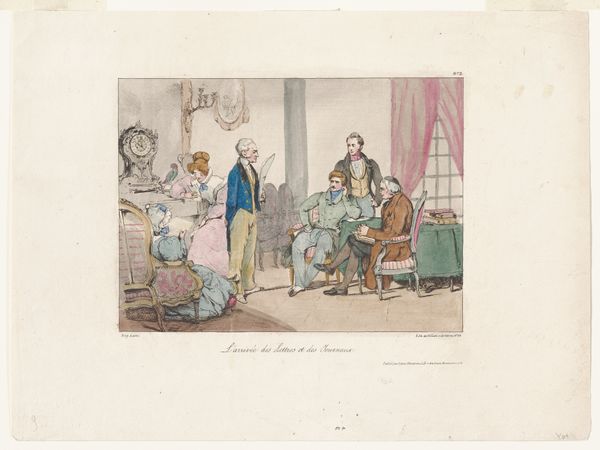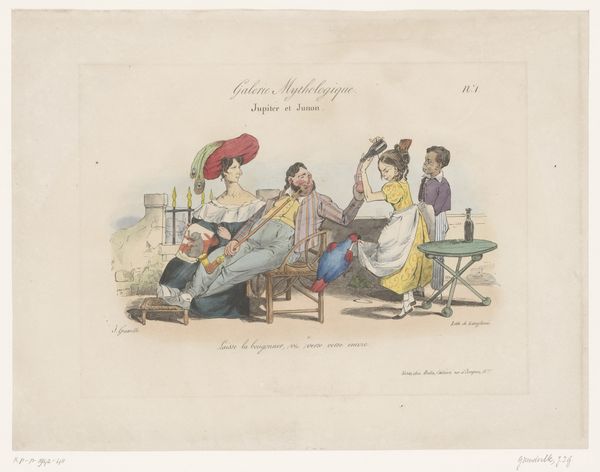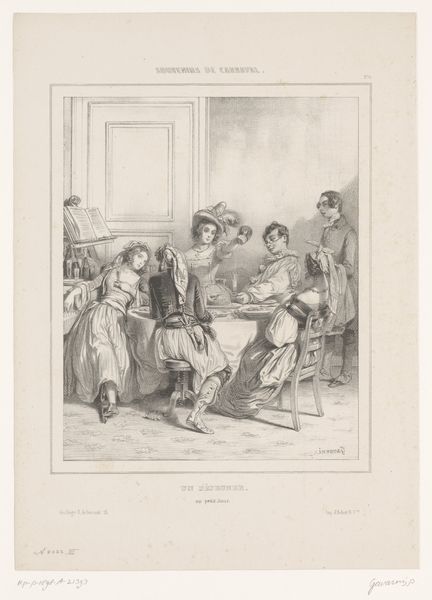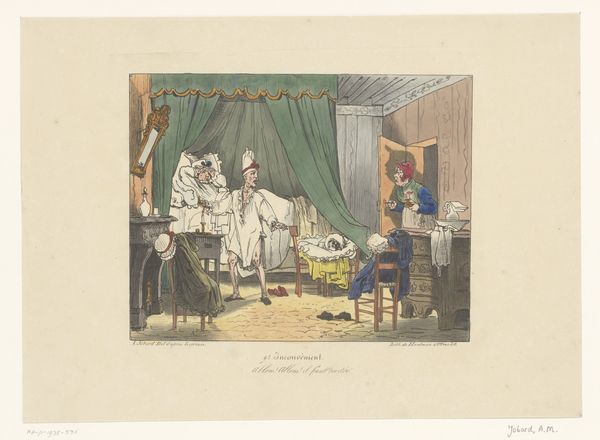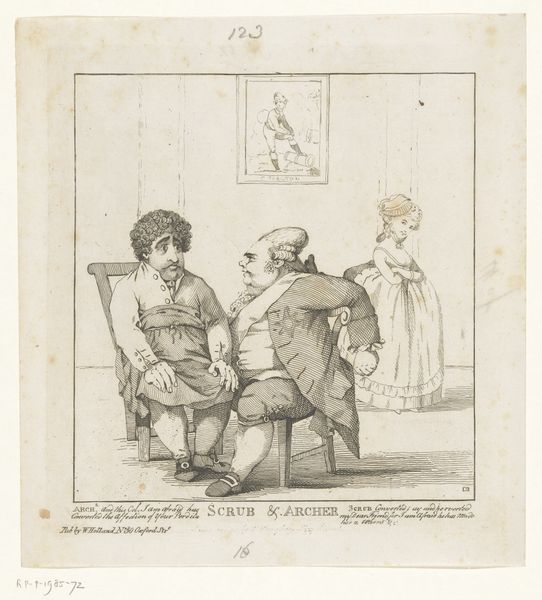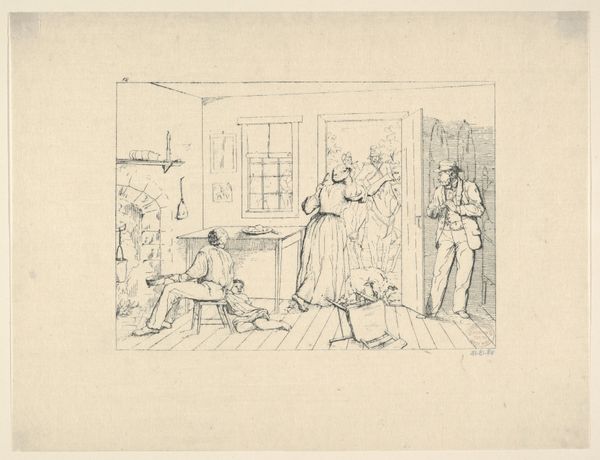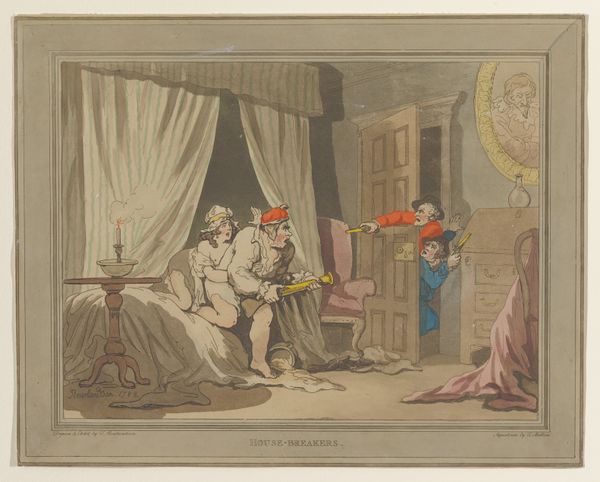
Caricature. No. 8. 2eme Partie. Le fils du fermier. 1833
0:00
0:00
print, watercolor
#
portrait
# print
#
caricature
#
figuration
#
watercolor
#
historical fashion
#
romanticism
#
france
#
watercolour illustration
#
genre-painting
#
history-painting
Dimensions: 7 3/8 x 9 1/4 in. (18.73 x 23.5 cm) (image)
Copyright: Public Domain
Curator: This watercolor print, made around 1833 by Eugène-Louis Lami, is titled *Caricature. No. 8. 2eme Partie. Le fils du fermier.* Editor: Immediately, I’m struck by the subtle humor in its depiction of class dynamics. It’s not overtly critical, but there's definitely a visual narrative being woven through these characters' postures and attire. Curator: It's precisely the post-revolutionary social upheaval in France that Lami engages with here. Consider the shifting power dynamics: A farmer’s son, signified by the title, now mixing in aristocratic circles. What does that suggest about the breakdown, or perhaps renegotiation, of those social hierarchies? Editor: It definitely reads as a satirical take on nouveau riche aspirations, particularly the son's rigid pose versus the languid attitudes of the seated figures. His military uniform feels almost like a costume. What’s fascinating is the implied commentary on performance—everyone is, in a sense, performing their class. Curator: Absolutely. The *mise-en-scène* within a bourgeois home invites us to question how these characters define themselves. The dog at the feet of the woman wearing a yellow dress symbolizes fidelity, domesticity and further underlines those social performance elements. Editor: I also can't ignore how the woman in yellow is being framed: Her extravagant attire and almost bored expression suggest a commentary on feminine roles within this changing society. The way the seated figures almost form a tableau, like players on a stage... Curator: Lami uses watercolor to further underscore the delicacy, even fragility, of the scene, hinting at the tensions simmering beneath the surface. The placement and facial expressions all enhance its ability to expose the contradictions within post-revolutionary French society. Editor: And that tension makes this more than just a snapshot of a historical moment. It holds up a mirror to ongoing struggles related to class and social mobility. It encourages a nuanced reading about the human costs embedded within structural inequality and individual aspirations. Curator: Agreed. Lami gives us the capacity to appreciate historical specificity with the acknowledgement of recurring sociopolitical motifs. Editor: Ultimately, the piece reveals to us a specific moment that reverberates across history, asking who gets to participate and on whose terms.
Comments
No comments
Be the first to comment and join the conversation on the ultimate creative platform.

